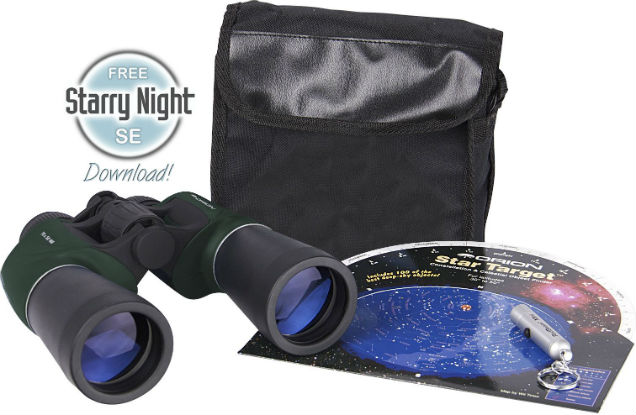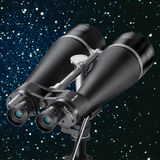{"closeOnBackgroundClick":true,"bindings":{"bind0":{"fn":"function(){$.fnProxy(arguments,\'#headerOverlay\',OverlayWidget.show,\'OverlayWidget.show\');}","type":"quicklookselected","element":".ql-thumbnail .Quicklook .trigger"}},"effectOnShowSpeed":"1200","dragByBody":false,"dragByHandle":true,"effectOnHide":"fade","effectOnShow":"fade","cssSelector":"ql-thumbnail","effectOnHideSpeed":"1200","allowOffScreenOverlay":false,"effectOnShowOptions":"{}","effectOnHideOptions":"{}","widgetClass":"OverlayWidget","captureClicks":true,"onScreenPadding":10}
{"clickFunction":"function() {$(\'#_widget1769494665003\').widgetClass().scrollPrevious(\'#_widget1769494665003\');}","widgetClass":"ButtonWidget"}
{"clickFunction":"function() {$(\'#_widget1769494665003\').widgetClass().scrollNext(\'#_widget1769494665003\');}","widgetClass":"ButtonWidget"}
{"snapClosest":true,"bindings":{"bind0":{"fn":"function(event, pageNum) { PagedDataSetFilmstripLoaderWidget.loadPage(\'#recentlyViewed\', Math.floor(pageNum)); }","type":"scrollend","element":"#_widget1769494665003_trigger"}},"unitSize":220,"widgetClass":"SnapToScrollerWidget","scrollSpeed":500,"scrollAmount":660,"afterScroll":"","animateScroll":"true","beforeScroll":"","direction":"vertical"}
{entityCount: 0}
{"emptyItemViewer":"<div class=\"image\"><!-- --></div>\n <div class=\"info\">\n <div class=\"name\"><!-- --></div>\n <div class=\"orionPrice\"><!-- --></div>\n </div>\n ","imageThreshold":3,"pages":2,"dataModel":{"imageWidth":90,"cacheEntitiesInRequest":false,"dataProviderWidget":"com.fry.ocpsdk.widget.catalog.dataproviders.RecentlyViewedDataProviderWidget","imageHeight":90,"itemViewerWidget":"com.fry.starter.widget.viewers.ItemViewerWidget","direction":"vertical"},"pageSize":3,"widgetClass":"PagedDataSetFilmstripLoaderWidget","loadThreshold":1,"direction":"vertical"}
{"ensembleSEOTranslationTypes":"ensemble","widgetClass":"BreadcrumbWidget","productSEOTranslationTypes":"product","categorySEOTranslationTypes":"category|section,category,thumbnail","delimText":"","catalogSEOTranslationTypes":"catalog","showCatalog":false}
{"showSinglePage":false,"totalItems":2,"defaultPageSize":20,"paging_next":"Next","paging_view_all":"View All 2 Items","paging_view_by_page":"View By Page","pageSize":20,"paging_previous":"Prev","currentIndex":0,"inactiveBuffer":2,"viewModeBeforePages":true,"persistentStorage":"true","showXofYLabel":false,"widgetClass":"CollapsingPagingWidget","activeBuffer":2,"triggerPageChanged":false,"defaultTotalItems":2}
 Orion is proud to partner with BBC Sky at Night Magazine, the UK's biggest selling astronomy periodical, to bring you this article as part of an ongoing series to provide valuable content to our customers. Check back each month for exciting articles from renowned amateur astronomers, practical observing tutorials, and much more!
Orion is proud to partner with BBC Sky at Night Magazine, the UK's biggest selling astronomy periodical, to bring you this article as part of an ongoing series to provide valuable content to our customers. Check back each month for exciting articles from renowned amateur astronomers, practical observing tutorials, and much more!
Telescopes aren't the only option for observing astronomical objects

Orion 10x50 Binocular Stargazing Kit
Starting out in astronomy and wondering what to buy for your first telescope? There's a simple answer to that question: don't buy one, buy two. Two small ones that are joined with a hinge so that the distance between them can be adjusted to exactly match your eyes. We are of course talking about binoculars — a valuable tool in the armouries of most active observers.
There are hundreds of astronomical bodies that a pair of binoculars will bring into view for you. Not only will they let you see many more objects than you can with the naked eye, but the detail and colour in those objects become a lot richer.
With binoculars, the Coathanger asterism in Vulpecula actually looks like a coathanger and the Orion Nebula becomes a fantastically detailed painting of light. The Milky Way is no longer a tenuous glowing band, but a knotted tangle of stars, interspersed with mysterious dark patches. Albireo goes from being an ordinary-looking star that marks the head of Cygnus to an exquisite binary juxtaposition of gold and sapphire. And you can easily see galaxies by the light that left them millions of years ago, when our ancestors were thinking about leaving the trees.
Binoculars are still suitable even if you want to do 'serious' astronomy. There are variable star observing programmes specifically for binoculars, and their portability makes them ideal for taking to the narrow track where a lunar graze or asteroid occultation is visible.
Alternatively, you could wrap up warm, lie back on your garden recliner and just enjoy the objects that the binoculars let you find as you cast your gaze among the stars. Before you even realise it, you have begun to learn the sky and you'll soon be able to navigate around it better than the entry-level Go-To telescope you nearly bought instead.
Best of all, you can have this complete observing system for two eyes for less than the price of one reasonably good telescope eyepiece.
What to Look For
Binoculars are classified by two numbers that refer to their magnification and aperture. A 10x50 pair of binoculars has a magnification of 10x, and each of the objective lenses has an aperture of 50mm. These numbers also enable you to calculate the size of the circle of light — or 'exit pupil' — that emerges from the eyepieces: all you have to do is divide the aperture by the magnification. This means a 10x50 pair of binoculars has an exit pupil of 5mm. The exit pupil should be no larger than the dark-dilated pupils of your eyes: a pupil of anywhere between 4-6mm is fine for your first pair of binoculars.
Larger apertures potentially show you more, but may need mounting if you want steady views over prolonged periods. Common sizes are:
- 8x40, which almost anyone over the age of 10 can hold steadily
- 10x50, which most adults can hold steadily (this size is a popular compromise between size and weight)
- 15x70, which really needs to be mounted, although they can be briefly handheld
You should also check that the distance between the eyepieces, or 'interpupillary distance' will adjust to your eyes. If you wear glasses, ensure that the binoculars have enough distance ('eye relief') from the eyepiece to your ideal eye position; 18mm or more should be fine.
There are two basic types of binoculars: Porro-prism and roof-prism. In any price range, roof-prisms are lighter, but Porro-prisms tend to have better optical quality. Once you've decided on size and type, get the best quality you can for your budget and start exploring the night sky.
Can I Use Any Old Binoculars?
In principle, yes: even plastic-lensed 4x20 toy binoculars can show you astronomical objects that you otherwise couldn't see, such as the moons of Jupiter. If you already have a pair of small binoculars, for example a 6x30 or 8x32 pair, try them out under the stars: you'll be amazed at how much more you can see. The optical quality will also make a difference and you may find that there are things you can see with good-quality small binoculars like 8x42s that are beyond the capability of an entry-level 15x70. But avoid zoom binoculars: good ones don't exist.
Better Than a Telescope?
If your passion is planetary detail, close double stars, globular clusters or planetary nebulae, then consider buying a telescope. But for the rest of the visible Universe, binoculars are the better option. Setting up handheld binoculars takes a few seconds, and even mounted ones can be set up in a few minutes, so you'll be observing long before your Go-To telescope-using buddies are ready to start.
Many objects are ideally framed in the wider field of handheld binoculars: asterisms like Kemble's Cascade or the Leaping Minnow overflow most telescope fields, as do large open clusters such as the Pleiades and the Beehive Cluster. Even large faint objects like the Triangulum Galaxy and the North America Nebula can be easier to see in budget 10x50 binoculars than in amateur telescopes of several times the price.
Copyright © Immediate Media. All rights reserved. No part of this article may be reproduced or transmitted in any form or by any means, electronic or mechanical without permission from the publisher.
{ sourceURL:'/catalog/includes/quicklook_miniproduct.jsp?entityId=128547&entityTypeId=4', sourceSelector:'' }
Budding astronomers today have a greater variety of telescopes to choose from than ever before. Some are complex, computerized marvels, while others offer a more basic approach to stargazing. But even with all of these to entice us, none is more versatile than a pair of binoculars. Indeed, when it comes to touring the universe, two eyes are better than one!
Advantages of Two-Eyed Touring
Observing the night sky with binoculars has many advantages. One of the greatest is how friendly and comfortable binoculars feel. Perhaps this is because they can be used either while standing up or sitting down. What could be more enjoyable than casually scanning the heavens with a binocular while lying back in your favorite chaise lounge?
Another great advantage is their portability. Astronomy on the go! While a telescope can be bulky and takes time to set up, binoculars are compact, lightweight, and ready instantly, either for a casual glance at the night sky or for an in-depth study of the universe.
Binoculars show the "real" sky. Astronomical telescopes flip the sky around one way or another, either upside-down, left-to-right, or both. Thanks to both their upright image and wide fields of view, binoculars keep everything as it was meant to be, making it easier to find your way around when comparing the view you see to a star chart.
The wide fields of binoculars also let us enjoy some sky objects that are simply too large to fit into a telescope?s limited field of view. You are probably familiar with some already, such as the Pleiades and the Coma Berenices Star Cluster, but that?s just the start! Dozens of sky sights are better appreciated through binoculars than through telescopes.
Research: Binocular Vision is Better
Beyond aesthetics, research shows that an observer?s visual acuity is greatly improved by using two eyes instead of only one. Binocular vision enhances our sensitivity to subtle differences in contrast, resolution, and color. Some people experience up to a 25 to 40 percent increase in their ability to detect faint objects through a binocular than through a conventional telescope!
That?s a dramatic improvement, but why? Light entering the eye is focused by the lens onto the retina, which converts the image into electrical pulses and sends them onto the brain. The brain then interprets the pulses into the image that we sense. By relying on only one set of pulses (i.e., using one eye), any inconsistencies in the signals will interfere with the final image. With two sets of signals to interpret, however, the brain will merge the pair of electrical messages. The result is the ability to see fainter, lower-contrast objects.
Yes, there are many benefits to touring the universe through binoculars, but perhaps the greatest is that the binocular universe seems much more personal than that viewed through a telescope. By extending our natural, two-eyed view, the cosmos seems drawn to us, and us to it. It is a feeling, a sense of oneness and belonging, that cannot be duplicated any other way.
Choosing Binoculars for Astronomy
The nighttime performance of binoculars depends on the aperture (diameter) of the front (objective) lenses and the magnification provided by the eyepieces. The wider the objective lenses, the more light the binocular will collect and transmit to your eyes. For astronomy, objective lenses of 50mm diameter or larger are recommended. Indeed, 7x50 binoculars (7x power and 50mm objective lenses) are ideal stargazing glasses because they offer plenty of light gathering, good power, bright images, and a wide field of view (which makes it easier to find things). A 10x50 binocular, also a popular size, has the same light-gathering capability but provides higher magnification (10x). The higher magnification may result in a slightly shakier image if you?re holding the binoculars by hand. But for astronomy, it?s advisable to mount the binocular on a tripod anyway, to prevent arm and neck fatigue from prolonged overhead viewing.
Even better for stargazing are "giant" binoculars with 70mm, 80mm, or 100mm objective lenses. Because they admit more light, they can reveal fainter objects. But beware: such binocs are heavy and will require a tripod for support. Big binoculars often come in higher powers such as 14x, 16x, 20x, or even more. With smaller binoculars, high powers like that would yield very dim images, but larger apertures take in enough light to maintain good image brightness as magnification is increased.
Ten Favorite Binocular Targets
1) The Moon ? Wow! You?ll see an unbelievable number of craters and rocky mountainous features, all in stunning clarity. Because its surface is so bright, the Moon is best observed during its crescent phases.
2) Jupiter and its Moons ? Binoculars will reveal the bright disk of this giant planet, flanked by its four largest Moons, whose positions change nightly.
3) The Milky Way ? Scanning along this dense band of stars on a summer night is immensely pleasurable. You?ll see countless clusters, knots, vacant dark patches, and nebulous puffs.
4) Sagittarius Star Clouds ? The part of the Milky Way near the constellation Sagittarius ("the Teapot") reveals the richest detail in the night sky. It teems with interesting objects, including the Lagoon, Swan, and Eagle Nebulas, the M24 Star Cloud, and a wealth of open clusters. Use a star chart to help identify them.
5) The Pleiades ? This sprawling cluster in Taurus appears as six or seven bright stars to the naked eye, but blooms to several dozen in binoculars.
6) The Andromeda Galaxy ? Easy to spot with the unaided eye under a dark summer sky, this majestic "island universe" fills a good portion of the binocular field. You?ll see its bright core and faint disk, perhaps even the dark dust lane around the edge.
7) The Orion Nebula ? One of the most beautiful gems in the sky, this expansive winter nebula glows brightly, displaying intricate wisps and tendrils. At its heart is an easily-split double star and a luminous quadruple star, called the Trapezium, which can be resolved with binoculars of 11x or more.
8) The Double Cluster ? Residing halfway between the "W" of Cassiopeia and the constellation Perseus, these side-by-side stellar splashes are a true delight to behold in binoculars.
9) Albireo ? A bright double star in the head of Cygnus the Swan, notable for its gorgeous color contrast: one star glows yellow, the other blue. Ten-power binoculars will split the pair cleanly.
10) Scutum Star Cloud ? This impressive star field contains the compact open cluster called the Wild Duck and some dark, starless patches.
{ sourceURL:'/catalog/includes/quicklook_miniproduct.jsp?entityId=131893&entityTypeId=4', sourceSelector:'' }
{"showSinglePage":false,"totalItems":2,"defaultPageSize":20,"paging_next":"Next","paging_view_all":"View All 2 Items","paging_view_by_page":"View By Page","pageSize":20,"paging_previous":"Prev","currentIndex":0,"inactiveBuffer":2,"viewModeBeforePages":true,"persistentStorage":"true","showXofYLabel":false,"widgetClass":"CollapsingPagingWidget","activeBuffer":2,"triggerPageChanged":false,"defaultTotalItems":2}






Why Buy From Orion
- 30 Day Money Back Guarantee
- Safe & Secure Shopping
- Next Day Shipping
- Easy Returns
- Sale Price Guarantee
- Free Technical Support

Shop Our Catalogs
Check out our colorful catalog, filled with hundreds of quality products.
See our eCatalogsEmail Sign Up
- Get In Touch
- How to Contact Us
- 800-447-1001
- Binoculars.com
- © 2002- Orion Telescopes & Binoculars All rights reserved
- DMCA/Copyright
- Terms and Conditions
- Privacy & Security





About Binoculars.com
Binoculars.com is a division of Orion Telescopes & Binoculars. We offer binoculars for every viewing interest, including astronomical binoculars, compact binoculars, waterproof binoculars, birding binoculars, and sport and hunting binoculars. We offer several leading brands of binoculars, including Barska, Bushnell, Celestron, Leica, Meade, Nikon, Orion, Pentax, and Steiner.. Not sure how to choose a binocular? Orion's Binoculars Buying Guide is a great place to start.
About Orion Telescopes & Binoculars
Since 1975 Orion Telescopes & Binoculars has been offering outdoor optics for sale direct to customers. Now an employee-owned company, we pride ourselves on an unswerving commitment to best quality products, value and unmatched customer care. Our 100% satisfaction guarantee says it all. In addition to our quality binoculars, we are known for our telescopes, accessories, and astrophotography equipment. Because we sell direct, we can offer you tremendous value at a great price.
sales and new products.

 English USD
English USD





